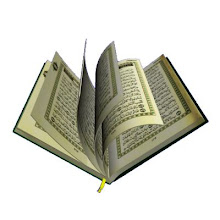- by Khadijah Al-Hashim
The first woman to follow the religion of Islam was Khadijah ul-Kubra'. Every Muslim knows who she was and what a role-model she was and continues to be. We also know that she was according to the Prophet (saw), one of the four greatest women from among the whole earth.
Khadijah was born in the year 555 C.E. (Christian era). Her parents were Khuwailid and Fatimah bint Zaidah. By the time she reached the age of forty she had attained quite a reputation for herself. She was known as a wealthy, noble, fine-natured business woman.
Khadijah heard about Mohammed's (saw) reputation for being an honest and upright young man. She sent him a proposal to ask him to handle some of her business affairs. On the return from one trip to Syria, he reported a profit that doubled that which anyone else had done for her. Needless to say, that impressed her greatly!
Khadijah's satisfaction with her new employee was soon to turn into love. Despite their age difference of 15 years, she desired to marry him. She confided this desire to he friend, Nufaysah, who in turn approached Mohammed (saw). This confused him. How could such a noble woman, who had turned down the marriage proposals of the noblest and wealthiest Quraysh men, desire to marry him?! Mohammed uncle Abu Talib and Khadijah's uncle 'Umar ibn Asad sat down to arrange the completion of the marriage. Little did any of them know just what the future had in store for this new couple!
Allah bestowed upon them six children. They were given two boys, Qasim and 'Abdullah, but neither survived infancy. They were also given four daughters, Zainab, Ruqaiyyah, Umm Kulthum, and Fatimah.
Mohammed would often go to Mount Hira for meditation. On returning one day, Khadijah could see he was quite shaken and upset. She inquired about this and he told her what had happened. She found out that today had been unlike any other in that, today, he had been given revelations from God! He had thought that he was possessed and was going mad. Khadijah tried to console her terrified husband by saying:
"Rejoice, O son of my uncle, and be of good heart. Surely by Him in whose hand is my soul, I have hope that you will be the prophet of this people. You have never done any wrong to anyone. You are kind to others and you help the poor. So Allah will not let you down."
He then asked for a blanket and she quickly fulfilled his request. Shortly thereafter, he fell asleep. when Mohammed woke, Khadijah took him to her cousin, Waraqah bin Nawfal. He was Christian and quite knowledgeable of the scriptures of the Torah and Bible. He confirmed Mohammed's prophethood and said:
"This is the same one who keeps the secrets (angel Gabriel) whom Allah had sent to Moses. I wish I were young and could live up to the time when your people would turn you out."
Just a few months later Gabriel came again and ordered him to start warning the people. Khadijah supported him in this by financially supporting the family and his teaching. She was also content to raise the children and handle the family affairs so that he could preach.
During the next 10 years, she proved herself to be a loving wife. She supported him when nobody else would. She consoled him when rough time hit them. She comforted and encouraged him when the Quraish did all they could to stop him from preaching. She remained the only wife of Mohammed until her death at the age of 65. She died on 10 Ramadan 620 C.E. in the 10th year of prophethood. Long after her death, Mohammed(SAW) remembered and honored her often.
There is a lesson in Khadijah's life. She accepted and started working for the religion of Islam after the first revelation. This not only made her the first Muslim but also a role-model for women today. She led the example of a good, loving wife. She also showed us how to forget the desires of this life and work only for the good of Islam. Khadijah(RA) truly was a righteous woman.

